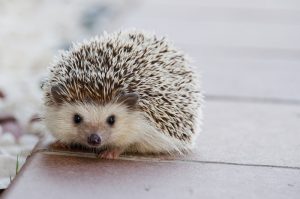Enter your address to receive notifications about new posts to your email.
Articles tagged Mammals
(24 results)
-
Cause of fatal naked foal syndrome revealed
When a horse is born with naked foal syndrome (NFS), it will likely die early. This genetic skin condition affects the Akhal-Teke horse breed from Turkmenistan, which is known for its speed, endurance, and intelligence. Worryingly, the incidence of NFS seems to be increasing. Although breeders have been aware of NFS for over 75 years,…
-
Protein variance in tightly controlled developmental processes
Take two neighboring cells from the same tissue—cells that are about as identical as any could be. Despite their similarities, these two cells could actually vary massively in their transcriptome. The typical fate of an mRNA—the “transcript” in transcriptome—is to serve as a template to make a protein, but it isn’t clear that the differences…
-
Dog pedigrees shed light on recombination
Recombination within the genome isn’t random. This swapping of DNA segments between one chromosome and its homolog preferentially affects specific genome regions called hotspots. These regions can have recombination rates many times higher than other areas of the genome, and the rapid shuffling of genetic information is thought to be important in evolution. The location…
-
The Genetic History of Horses
Like any revolutionary technology, domestic horses changed human society. The incredible speed and strength of these animals opened up new opportunities to spread trade, language, and culture. For thousands of years, horses have been helping build human society by pulling wagons and plows and carrying soldiers and travelers on their backs. Horse husbandry changed humanity,…
-
Genome of fiercely protective Fonni’s Dog reflects human history of Sardinia
A genomic analysis of 28 dog breeds has traced the genetic history of the remarkable Fonni’s Dog, a herd guardian endemic to the Mediterranean island of Sardinia. The results, published in this month’s issue of GENETICS, reveal that the regional variety has developed into a true breed through unregulated selection for its distinctive behavior, and that…
-
Friendly dogs with floppy ears: The domestication syndrome
The mild temperament that distinguishes the family dog from its wolf ancestors is just one of a whole array of traits that seem to have evolved during domestication. Domestication syndrome refers to the suite of characteristics commonly observed in domestic animals, including docility, shorter muzzles, smaller teeth, smaller and floppier ears, and an altered estrous…
-
Sewall Wright: Evolving Mendel
In 1931, Sewall Wright—a quiet American geneticist specializing in livestock and guinea pigs—published a GENETICS paper that changed how we study evolution. Wright’s “Evolution in Mendelian populations” was one of the founding documents of population genetics and was among the first formal frameworks to reconcile Mendel’s laws of inheritance with Darwin’s vision of natural selection.…
-
Unlocking the Ribocode
Genes to Genomes asked Dr. Maria Barna (Stanford University), a recipient of the Rosalind Franklin Award for Young Investigators, to tell us about her research and what it means to receive the award. She will be recognized for her Rosalind Franklin Award along with the other 2016 recipient, Dr. Carolyn McBride, at the 2015 American Society…
-
Rodents of unusual size: Genetic complexity underlies evolution of body size in island mice
Genetic analysis of an island population of mice reveals that 19 quantitative trait loci are responsible for their impressive size. Island populations of animals, isolated from their mainland relatives, have given us insight into evolution from the very birth of the field. In fact, studying finches on the Galápagos Islands helped Charles Darwin establish…
-
The differences between fierce and friendly rats
In the early 1970s, a couple of hundred wild rats near the Siberian city of Novosibirsk were rounded up by scientists for an ambitious experiment to understand how animals evolve during domestication. Dimitry Belyaev and his colleagues—known for their related project on domesticating foxes—split the rats into two groups. With one group, the researchers tried to replicate…
-
How the cat got its spots (and hearing problems)
Mammal domestication is a hot topic, with many groups releasing detailed genetic studies of different models of domestication. This week we’ll look at the genetics of cat colors and follow up on the recently published domestication syndrome hypothesis. Next week we’ll feature new research on experimental rat domestication. Stay tuned! Does your cat have a…











